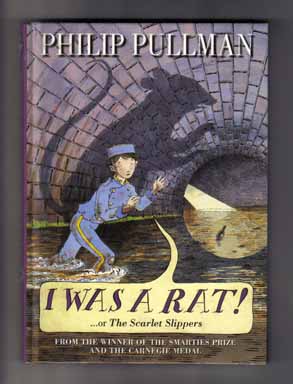"I WAS A RAT"
So insists Roger. Maybe it's true. But what is he now? A terrifying monster rampaging in the sewers? The Daily Scourage is sure of it. A money-spinning fairground freak? He is to Mr Tapscrew. A champion wriggler and a downy card? That's what Billy hopes. Or just an ordinary small boy, though a little ratty in his habits?
Only three people believe this version of the story. Only one of them knows who Roger really is. And luckily a story about her can sell even more newspapers than one about a rat-boy...
A scintillating weaving of fairy tale and adventure, and some pertinent parody of the press, from the winner of the Carnegie Medal, Smarties Prize and Guardian Children's Fiction Award, Philip Pullman
"Bless my soul!" said Bob. "Who are you?"
"I was a rat," said the little boy.
When a grubby young pageboy knocks on the door of Bob the cobbler and Joan the washerwoman's house, the kindly couple hardly knows what to think. Could this delusional boy be the answer to their prayers for a little one of their own? And was he really once a rat? It seems so. He shreds his bedding, for example, and he chews his toast swiftly with his front teeth. He eats an entire pencil and bites his teacher. Despite the fact that he is a little ratty in his habits, the old couple grow quite fond of the young fellow.
In time, the word spreads that there's a rat-boy in town, news that intrigues everyone from the Royal Philosopher to the P.T. Barnum-inspired freak-peddler Oliver Tapscrew to a reporter from the local rag The Daily Scourge. As the harmless, well-meaning boy is transformed into "The Monster of the Sewers" through pure sensationalism and mass hysteria, Philip Pullman playfully satirizes the power of the press and society at large.
What does it mean to be human? In this often darkly comic Dickensian tale, rats start to look pretty good by comparison. But in a fairy-tale ending, Bob and Joan teach us that humans, corrupt as we are, can always take solace in toasted cheese, love, and good craftsmanship. Kevin Hawkes's black-and-white illustrations enliven the already vivacious adventure that, thanks to Pullman's ever lovely wordplay and sly satire, is every bit as enjoyable for adults as it is for young readers. (Ages 9 to 12) --Karin Snelson


